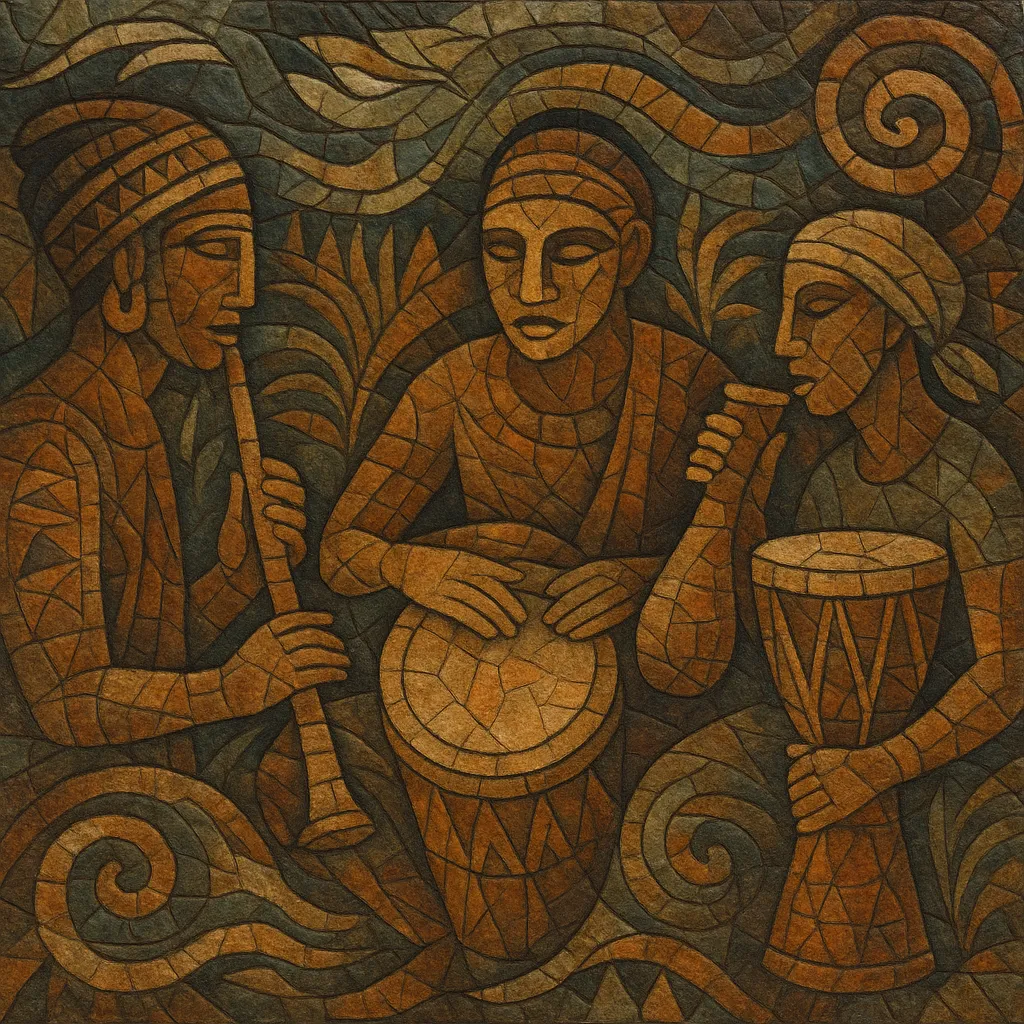Tribal ambient is a branch of ambient music that merges spacious, drone-based atmospheres with hand-played, "tribal" percussion, non-Western instrumentation, and environmental field recordings.
It emphasizes trance-inducing polyrhythms, ritualistic timbres (frame drums, shakers, clay and skin drums, rattles), and sustained harmonic beds, often evoking a sense of timeless, pre-industrial ritual or nature-centered spirituality.
Rather than song-like structures, pieces unfold slowly and organically, favoring texture, space, and gradual transformation over melody or chord changes. The result is immersive, cinematic soundscapes that feel both primordial and otherworldly.
The roots of tribal ambient lie in the late 1980s, when ambient pioneers began integrating non-Western percussion and field recordings into extended, drone-based soundscapes. Steve Roach’s Dreamtime Return (1988) is often cited as a seminal touchstone, blending spacious synths and environmental recordings with ritual percussion inspired by Australian landscapes. Parallel experiments by artists like Robert Rich, Vidna Obmana, and O Yuki Conjugate helped codify the aesthetic: slow-moving textures, hand percussion, and a strong sense of place.
During the 1990s, the style matured and diversified. Rapoon (Robin Storey) introduced looping ethnographic fragments, hypnotic patterns, and shadowy atmospheres, while Mexican composer Jorge Reyes fused indigenous Mesoamerican instruments with ambient electronics. Projects such as Tuu and collaborations like Suspended Memories (Roach, Reyes, Suso Saiz) further defined a ritual, nature-rooted sensibility distinct from the club-oriented “tribal” strains of house and techno. Releases frequently featured long-form compositions, polyrhythms, and heavy use of environmental sound design.
In the 2000s, tribal ambient intersected with dark ambient, drone, and psybient. Artists explored deeper ceremonial percussion (Byron Metcalf’s frame-drum-driven collaborations), more granular sound design, and high-fidelity field recordings. The style also influenced the festival and downtempo scenes, where meditational or ceremonial sets incorporated hand percussion, drones, and nature ambiences.
Today, tribal ambient remains a niche yet influential strand of ambient music. Its techniques—long drones, organic percussion, site-specific recording, and modal minimalism—are common in psybient, ritual ambient, and "organic" electronic styles. Contemporary producers balance cultural sensitivity with sound design, often prioritizing original recordings, collaboration with tradition bearers, and respectful contextualization.


